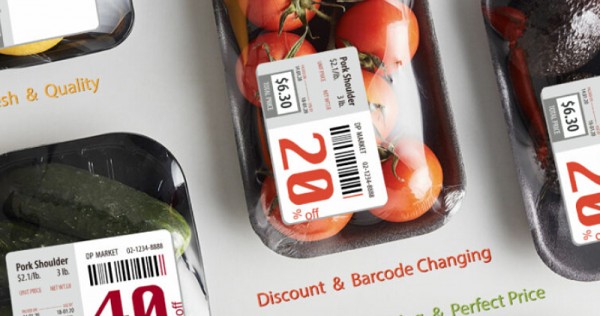Three students from the National Taipei University of Technology recently took home the ‘Best of the Year’ award at iF Design Talent Award 2020 for their innovative colour-changing stickers that help reduce waste in supermarkets.
Named Barcodiscount, the project design involves discount stickers that change colours automatically as products edge toward their expiration date.
According to the students, the design was inspired by their observation of produce going to waste as supermarkets usually place discounts on food nearing expiration dates, but need staff to manually replace stickers which is ‘time-consuming and laborious’.
For this reason, they came up with the stickers that can be activated when the label is attached to the product.
According to Barcodiscount’s website, ‘the bottom layer is ‘no discount’ and becomes 20 per cent off over time.’
‘Then, the upper layer, which is transparent, becomes a white background with the words 40 per cent off while covering the bottom layer.’
The barcode also changes slightly as well, so they can be easily scanned at checkout reflecting the discount, the students added.
‘Barcodiscount only needs one sticker, and it reduces the burden on staffs’ workload and increases efficiency.’
Believing there to be a great incentive to consumers for buying discounted products, students Chang Yen-yu, Huang Hsin-an and Chen Ching-i wrote in their proposal that they hoped to emphasize it as buying discounted foods ‘reduce waste by an average of 33 per cent, while revenues increase by an average of 6.3 per cent.’
Their design was internationally recognised, and not only won the ‘National runner-up’ for the UK James Dyson Award 2020 but it was also awarded ‘Best of the year’ iF Design Talent, recognised as an innovative design that is relevant to businesses and everyday life.
According to foreign media, Barcodiscount is looking to roll out the technology in Taiwan and promised to ‘pay attention to the colour-changing technology development’ to ensure their design can be realised in the future.
This article was first published in Asia One . All contents and images are copyright to their respective owners and sources.











